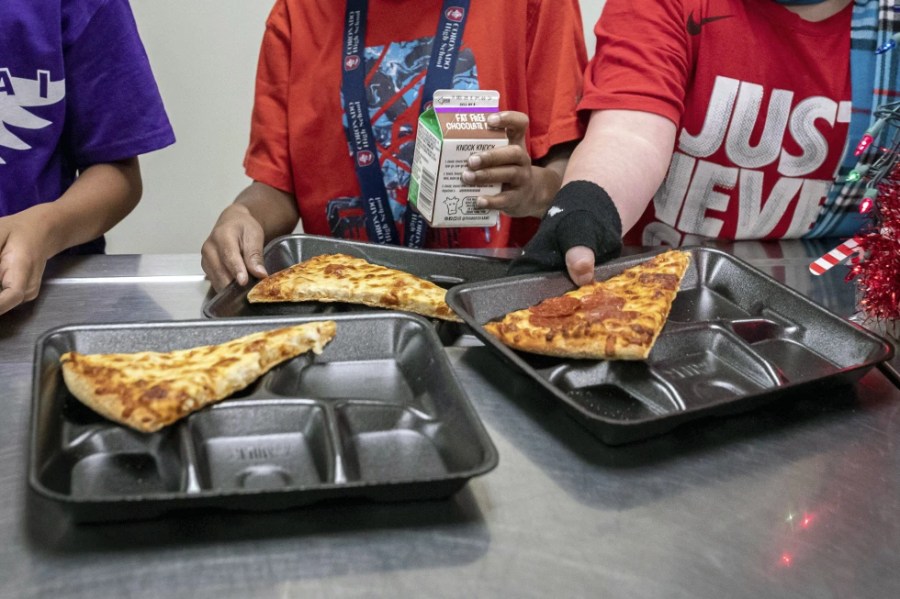Food insecurity shot up last year with inflation and the end of pandemic-era aid, a new report says
"The report is a stark reminder of the consequences of shrinking our proven safety net," Agriculture Secretary Tom Vilsack says
WASHINGTON (AP) — An estimated 17 million households reported problems finding enough food in 2022 — a sharp jump from 2021 when boosted government aid helped ease the pandemic-induced economic shutdown.
A new Department of Agriculture report, released Wednesday, paints a sobering picture of post-pandemic hardship with “statistically significant” increases in food insecurity across multiple categories. Using a representative survey sample of roughly 32,000 American households, the report said 12.8% (17 million households) reported occasional problems affording enough food in 2022 — up from 10.2% (13.5 million households) in 2021 and 10.5% (13.8 million households) in 2020.
Analysts and food security professionals point to the dual impact last year of high inflation and the gradual expiration of multiple pandemic-era government assistance measures.

“This underscores how the unwinding of the pandemic interventions and the rising costs of food has taken hold,” said Geri Henchy, director of nutrition policy for the Food Research and Action Center. “It’s like a horrible storm for families.”
The number of households reporting more serious forms of economic hardship also increased. Wednesday’s report by the USDA’s Economic Research Service also tracks families with “very low food security” — a condition it defines as families having to ration food consumption and where “normal eating patterns were disrupted at times during the year because of limited resources.”
Households experiencing this level of hardship in 2022 rose to 5.1% (6.8 million households), up from 3.8% (5.1 million households) in 2021 and 3.9% (5.1 million households) in 2020.

Increased benefits and more relaxed enrollment rules for SNAP — the foundational government assistance program commonly known as food stamps — didn’t end until early this year. But a host of other federal and state-level pandemic aid initiatives wound down last year. One key national change that Henchy highlighted was the end of universal free school lunches for all students, a policy that ended over the summer of 2022.
“These were healthy, nutritious meals because the schools had good standards,” she said. “It was great for the kids. It was stigma-free, and it was huge for people’s budgets.”

These findings broadly mirror real-time anecdotes from late last year, when multiple food banks and charitable groups reported being surprised by the higher-than-expected levels of need entering the 2022 holiday season. In several cases last year, food banks and charities made educated estimates of how much food they would need to distribute, only to find that those predictions were far too low.
Agriculture Secretary Tom Vilsack called the survey results “unacceptable” and said the rising level of need “should be a wake-up call to those wanting to further roll back our anti-poverty and anti-hunger programs.”
Vilsack highlighted the increased fruit and vegetable benefits for recipients of WIC — an aid program that specifically targets mothers and young children. The increased WIC benefits package is one of the few pandemic policies that’s continuing, although there have been proposals in Congress to bring those benefits down to pre-pandemic levels.
“The experience of the pandemic showed us that when government invests in meaningful support for families, we can make a positive impact on food security, even during challenging economic times,” Vilsack said in a statement Wednesday. “No child should go hungry in America. The report is a stark reminder of the consequences of shrinking our proven safety net.”
President Joe Biden’s White House echoed Vilsack’s call to maintain WIC funding at its current levels and strengthen the country’s social safety net in multiple ways.
White House spokesperson Jeremy Edwards said: “17 million households experiencing food insecurity in the richest nation in the world is unacceptable, and exactly why President Biden has continued to call on Congress to fund programs like WIC, as well as the Supplemental Nutrition Assistance Program (SNAP), the National School Lunch Program, and restore the enhanced Child Tax Credit that helped cut child poverty in half and helped millions of families afford the basics.”
TheGrio is FREE on your TV via Apple TV, Amazon Fire, Roku and Android TV. Also, please download theGrio mobile apps today!


